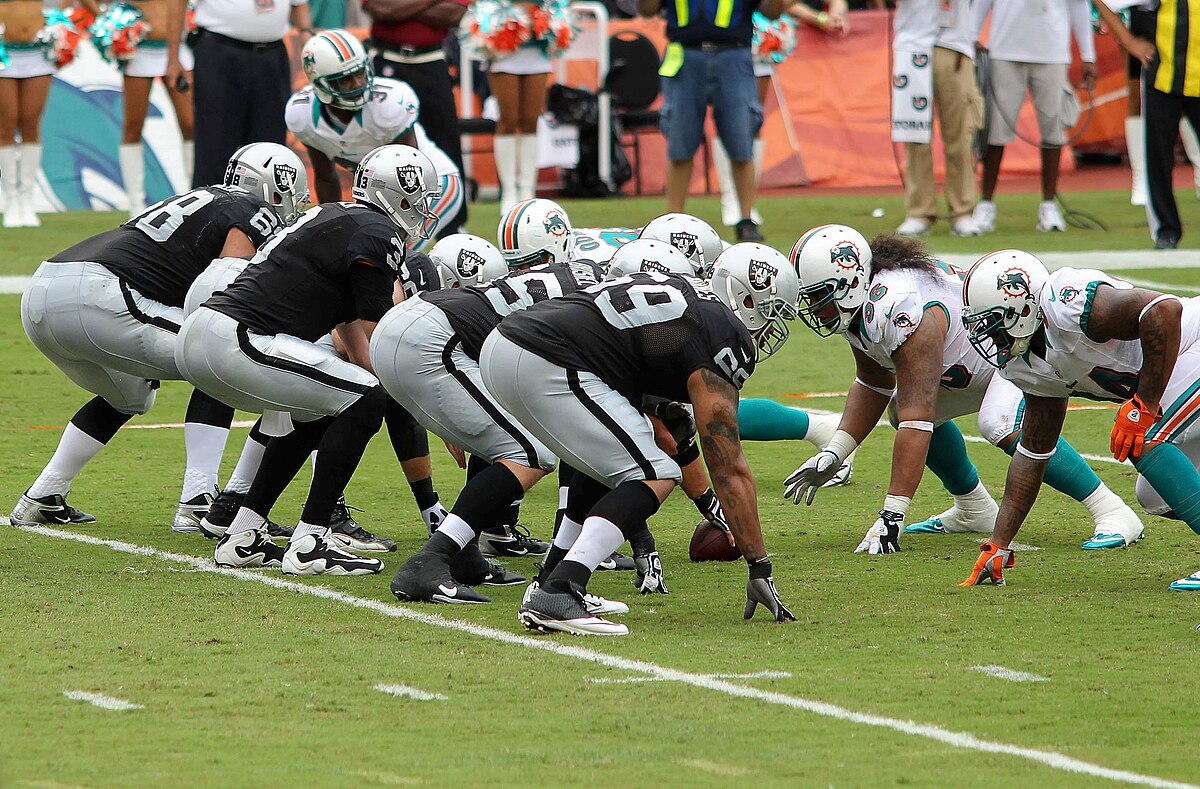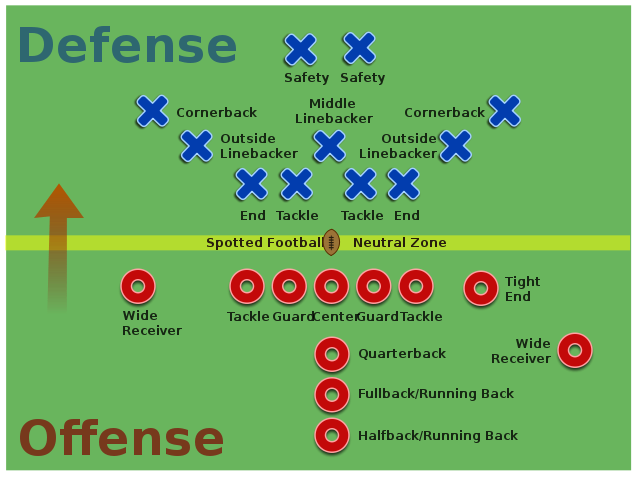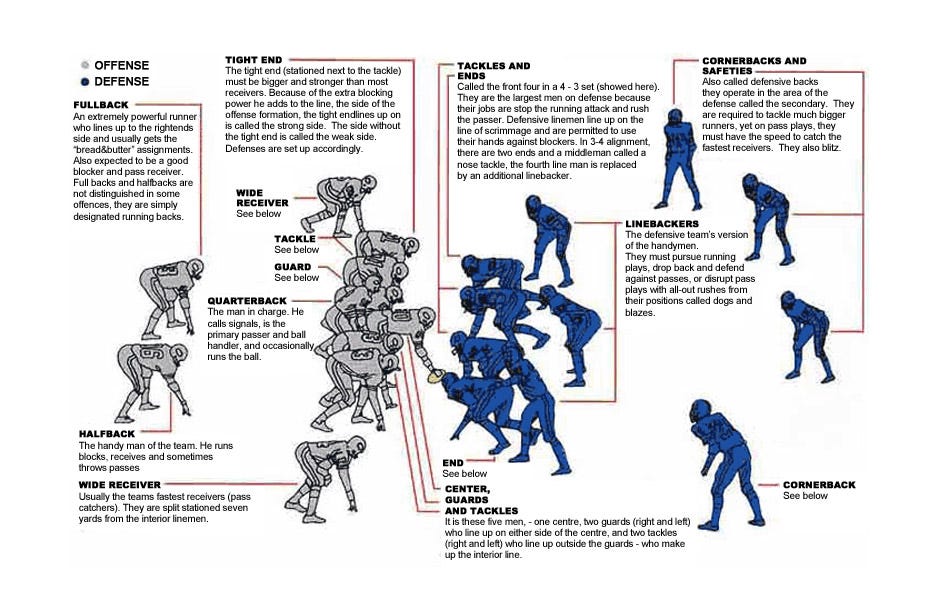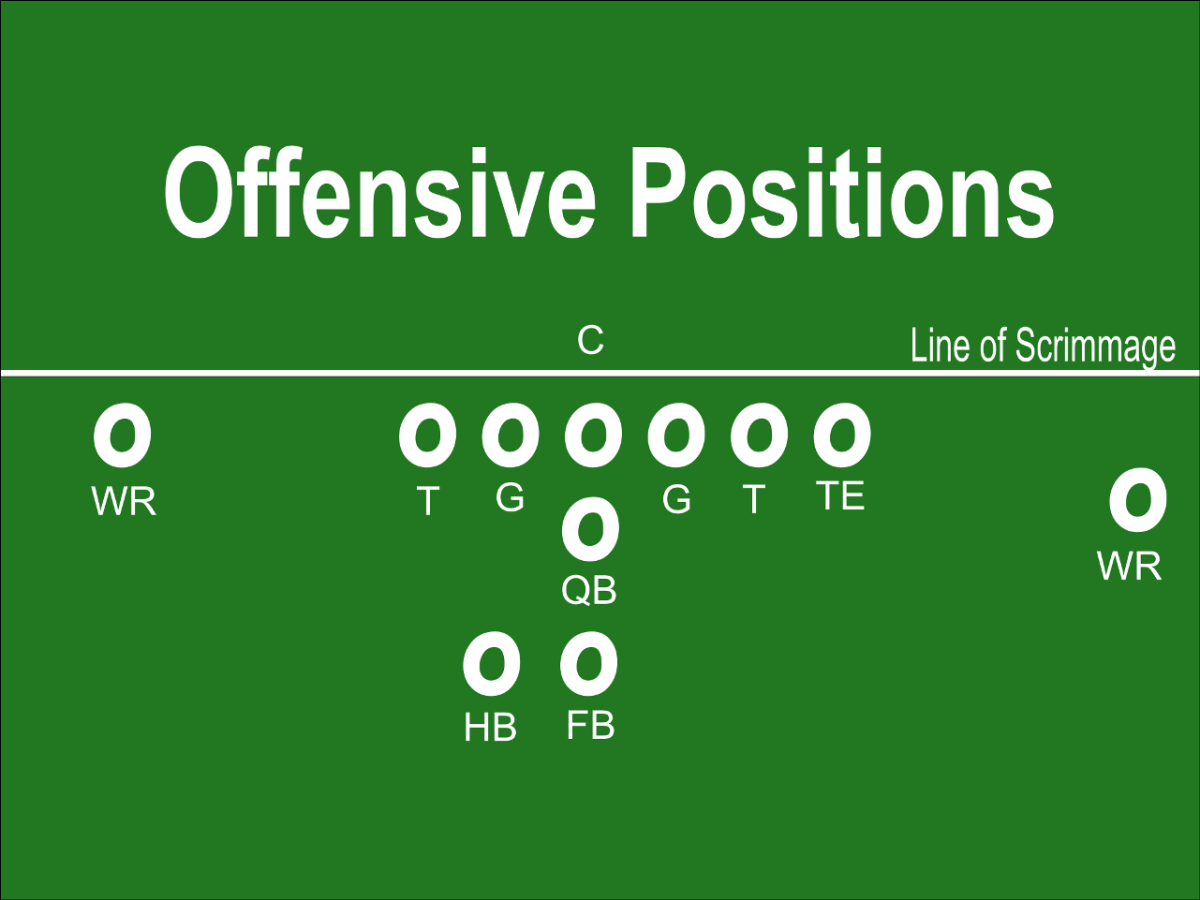Introduction

In the high-stakes world of the NFL, offensive strategies are the backbone of a team’s success. These strategies dictate the flow of the game, influence the outcome of plays, and ultimately determine the scoreboard. A well-crafted offensive game plan can turn the tide in a team’s favor, showcasing the brilliance of playmakers and the meticulous planning of coaches. For more on the importance of offensive strategies, visit NFL Official Site.
The Evolution of Offensive Playbooks
The history of NFL offensive playbooks is a tale of innovation and adaptation. From the early days of simple run-heavy schemes to the complex, multi-faceted offenses of today, playbooks have continuously evolved. Visionary coaches like Bill Walsh, with his West Coast offense, and Don Coryell, who pioneered the Air Coryell system, have revolutionized how the game is played. These evolutions have not only made the game more exciting for fans but have also pushed the boundaries of what is possible on the gridiron.
Main Topics Covered
In this article, we will explore the intricate world of NFL offensive strategies. We will delve into the core formations that teams use to execute their game plans, such as the Pro Set, I-Formation, and Shotgun Formation. We’ll examine popular offensive schemes, including the West Coast Offense, Spread Offense, and Run-Pass Option (RPO). Key offensive plays and concepts, like Play Action Pass, Zone Running Scheme, and Air Raid Offense, will be dissected to understand their mechanics and effectiveness. Additionally, we’ll highlight the crucial roles that players, from quarterbacks to offensive linemen, play in these strategies. For an extensive guide on offensive strategies, visit Football Strategy Guide.
Historical Evolution of Offensive Strategies
Early Formations and Play Styles
In the early days of football, offensive strategies were straightforward and heavily reliant on the running game. Formations like the Single Wing and the T-Formation dominated the field. The Single Wing, popularized by Glenn “Pop” Warner in the early 20th century, emphasized power running and misdirection. Meanwhile, the T-Formation, which gained prominence in the 1940s, introduced a balanced attack with the quarterback under center, allowing for more versatile play options. Learn more about the evolution of formations at Football History.
Introduction of the Forward Pass
The introduction of the forward pass revolutionized the game of football. Legalized in 1906, it provided teams with a new dimension of attack, making the game faster and more dynamic. Initially met with skepticism and limited use, the forward pass gradually became a staple of offensive playbooks. Coaches like Knute Rockne of Notre Dame were early adopters, using the pass to great effect and setting the stage for its widespread acceptance.
Key Figures in the Development of Offensive Strategies
The evolution of offensive strategies owes much to the innovative minds that pushed the boundaries of the game. Bill Walsh, often referred to as the father of the West Coast Offense, brought a new approach focused on short, precise passes that allowed for a controlled and efficient attack. His system emphasized timing and rhythm, revolutionizing how teams moved the ball down the field. Don Coryell, another pivotal figure, is known for developing the Air Coryell offense. His scheme emphasized vertical passing, stretching defenses and creating opportunities for big plays. Coryell’s innovative use of the passing game laid the groundwork for modern aerial attacks in the NFL.
Core Offensive Formations
Pro Set Formation
Description and Key Features: The Pro Set Formation is a versatile and balanced offensive setup that features two running backs lined up in the backfield, a tight end, and two wide receivers. This formation allows the offense to disguise its intentions, making it equally effective for both running plays and passing plays. The running backs are positioned behind the quarterback, providing multiple options for handoffs, play-action passes, and screens. For more details on the Pro Set Formation, visit Pro Football Strategy.
I-Formation

Description and Key Features: The I-Formation is one of the most recognizable formations in football. It features a fullback and a running back lined up directly behind the quarterback, forming a straight line, or “I,” from the line of scrimmage. The offensive line in this formation typically includes a tight end on one side to provide additional blocking support.
Strengths and Weaknesses
- Strengths: Power Running: The I-Formation excels at power running plays, utilizing the fullback as a lead blocker to clear paths for the running back. Play-Action: The setup is highly effective for play-action passes, drawing defensive backs toward the line of scrimmage and opening up downfield passing lanes.
- Weaknesses: Predictability: Overuse of the I-Formation can make the offense predictable, allowing defenses to stack the box and shut down the run. Limited Passing Options: While effective for play-action, it provides fewer immediate passing options compared to spread formations.
Shotgun Formation
Description and Key Features: In the Shotgun Formation, the quarterback stands several yards behind the line of scrimmage, with one or more running backs positioned either beside or behind him. This setup allows the quarterback to survey the field quickly and make faster decisions, which is crucial for effective passing plays. It also positions the running back in the backfield, providing opportunities for draw plays and screen passes.
Modern Adaptations and Use Cases: Modern adaptations of the Shotgun Formation include spread variations that position multiple wide receivers across the field, creating mismatches against defensive backs. This formation is highly effective for both quick passes and deeper routes, making it a staple in many high-powered offenses. The Shotgun is also commonly used in hurry-up offenses, allowing teams to maintain a fast tempo and keep defenses off balance.
Popular Offensive Schemes
West Coast Offense
Origins and Development: The West Coast Offense was pioneered by Bill Walsh during his tenure with the San Francisco 49ers in the 1980s. Walsh’s innovative approach focused on short, high-percentage passing plays designed to control the ball and methodically move it down the field. This scheme was a departure from the deep passing attacks prevalent in earlier eras, emphasizing precision and timing over brute force. For more on the origins of the West Coast Offense, visit NFL History.
Core Principles and Play Concepts
- Short, Quick Passes: Utilizes quick, short passes to control the tempo and maintain possession.
- High Completion Rate: Focuses on high-percentage throws to keep the offense on schedule.
- Timing and Rhythm: Emphasizes the timing between the quarterback and receivers, ensuring routes are run with precision.
- Spread the Defense: Utilizes a variety of formations and personnel to spread the defense and create mismatches.
Key play concepts include slants, quick outs, and option routes that allow receivers to adjust their patterns based on defensive coverage.
Spread Offense
How It Differs from Traditional Formations: The Spread Offense differs from traditional formations by focusing on spreading the defense horizontally across the field. This scheme typically involves multiple wide receivers and often positions the quarterback in the shotgun formation. The goal is to create space and mismatches by utilizing the entire width of the field, forcing defensive backs to cover more ground.
Run-Pass Option (RPO)
Mechanics and Decision-Making Process: The Run-Pass Option (RPO) is a hybrid play that gives the quarterback the choice to hand the ball off to the running back or throw a quick pass, depending on the defensive alignment and reaction. This decision is made post-snap, requiring the quarterback to read the behavior of specific defenders, often the linebackers or defensive ends.
Impact on Defenses: Conflict for Defenders: Forces defenders to hesitate, as they must account for both the run and pass, reducing their aggressiveness. Versatility: Provides the offense with the flexibility to exploit whatever defensive weakness presents itself, making it a highly effective strategy against modern defenses. Mismatch Creation: Similar to the Spread Offense, RPOs create mismatches and put defenders in difficult positions, leveraging the offense’s ability to quickly adapt to defensive schemes.
Key Offensive Plays and Concepts
Play Action Pass
How It Works and When It’s Used: The Play Action Pass is a deceptive play designed to trick the defense into thinking a run is coming. The quarterback fakes a handoff to the running back, which often causes the defensive line and linebackers to move toward the line of scrimmage in an attempt to stop the run. This opens up passing lanes behind them, allowing the quarterback to throw to open receivers.
Examples of Successful Play-Action Teams: Teams like the Los Angeles Rams under Sean McVay and the Tennessee Titans with Derrick Henry have effectively utilized play action. The Rams’ success with play action is partly due to their strong run game and the quarterback’s ability to sell the fake, creating opportunities for big plays downfield. Similarly, the Titans’ play-action game thrives due to Henry’s dominant running, which draws defenders in and opens up the passing game.
Zone Running Scheme

Basics of Zone Blocking: The Zone Running Scheme relies on zone blocking techniques, where offensive linemen move laterally in unison to create running lanes. Instead of blocking a specific defender, each lineman is responsible for a zone. The running back reads the blocks and decides where to cut based on how the play develops. Zone blocking schemes are characterized by lateral movement, double teams, and running back vision.
Air Raid Offense
High-Frequency Passing Attack: The Air Raid Offense is built around a high-frequency passing attack, emphasizing quick, short passes to spread the defense and create mismatches. Originating in college football, this scheme uses multiple wide receiver sets and often operates out of the shotgun formation to maximize passing opportunities. Key characteristics include high tempo, spread formations, and simplified reads for the quarterback to facilitate quick decision-making. The Air Raid has had a significant impact on college football, with teams like Texas Tech and Oklahoma utilizing it to great success.
Player Roles in Offensive Strategies
Quarterback
Role in Executing Offensive Schemes: The quarterback is the leader of the offense and is crucial in executing offensive schemes. They are responsible for calling the plays, making adjustments at the line of scrimmage, and distributing the ball to playmakers. The quarterback’s ability to read defenses and make quick decisions directly impacts the success of the offensive strategy.
Importance of Pre-Snap Reads and Decision-Making: Pre-snap reads are essential for quarterbacks to identify defensive alignments and potential blitzes. By analyzing the defensive setup, quarterbacks can make necessary adjustments, such as audibles or shifting protections, to optimize the play. Effective decision-making, both pre- and post-snap, is key to exploiting defensive weaknesses and executing the game plan efficiently.
Running Backs

Different Types of Running Backs and Their Roles: Running backs come in various types, each suited to different roles within the offensive scheme: Power Backs: Known for their strength and ability to gain tough yards between the tackles. Speed Backs: Utilized for their quickness and ability to make plays on the outside. All-Purpose Backs: Versatile players who can run, catch passes, and block effectively. Importance in Both Running and Passing Games: Running backs are vital in both the running and passing games. They execute run plays, including power runs, zone runs, and draw plays, and are often involved in passing plays through screens, swing passes, and checkdowns. Additionally, running backs play a crucial role in pass protection, helping to pick up blitzes and protect the quarterback.
Wide Receivers and Tight Ends
Route Running and Catching Techniques: Wide receivers and tight ends are key targets in the passing game. They must excel in route running, creating separation from defensive backs through precise movements and quick cuts. Catching techniques, including hand positioning and body control, are critical for securing receptions, especially in contested situations.
Blocking Responsibilities and Versatility: In addition to their receiving duties, wide receivers and tight ends have blocking responsibilities. Wide receivers often block downfield to support running plays, while tight ends frequently block at the line of scrimmage, assisting in both pass and run blocking. Versatility is a valuable trait, allowing these players to contribute in multiple facets of the game.
Offensive Line
Key Blocking Techniques (Pass Blocking, Run Blocking): The offensive line is the backbone of any offensive strategy, responsible for both pass blocking and run blocking:
- Pass Blocking: Offensive linemen protect the quarterback by forming a pocket and keeping defensive players at bay. Techniques include proper hand placement, footwork, and maintaining balance to counter defensive moves.
- Run Blocking: Involves driving defensive players off the line of scrimmage to create running lanes. Techniques include zone blocking, power blocking, and double teams to open up space for the running back.
Importance of Communication and Cohesion: Communication and cohesion among offensive linemen are critical for effective blocking. Linemen must work together to identify defensive fronts, call out blitzes, and execute blocking assignments seamlessly. Strong communication ensures that all linemen are on the same page, reducing the likelihood of missed assignments and enhancing overall performance.
Each player’s role in offensive strategies
Each player’s role in offensive strategies is tailored to their unique skills and responsibilities, contributing to the overall effectiveness of the team’s game plan. From the quarterback’s leadership to the offensive line’s protection, every position is integral to the success of offensive schemes on the field.